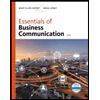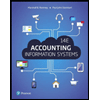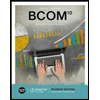
MindTap Business Law, 1 term (6 months) Printed Access Card for Cross/Miller's The Legal Environment of Business: Text and Cases, 10th (MindTap Course List)
10th Edition
ISBN: 9781337093842
Author: Frank B. Cross, Roger LeRoy Miller
Publisher: Cengage Learning
expand_more
expand_more
format_list_bulleted
Question
Chapter 20, Problem 2IS
Summary Introduction
Case summary: Employee E works in company F. While working on a task E he got himself injured.
To explain : In order to obtain workers compensation whether it is necessary that E’s injury has to be caused by the negligence of F.
Summary Introduction
Case summary:Employee E works in company F. While working on a task E he got himself injured.
To find: Whether intentional injury is still counted as eligibility for workers’ compensation.
Expert Solution & Answer
Trending nowThis is a popular solution!

Students have asked these similar questions
The cost of goods sold is
The amount of the direct materials quantity variance is?
What is the total amount of property plant and equipment the balance sheet ?
Chapter 20 Solutions
MindTap Business Law, 1 term (6 months) Printed Access Card for Cross/Miller's The Legal Environment of Business: Text and Cases, 10th (MindTap Course List)
Knowledge Booster
Similar questions
- Can you solve this general accounting question with accurate accounting calculations?arrow_forwardIn 2019, Philip Industries sold 3,800 units at $275 each. Variable costs were $195 per unit, and fixed costs were $120,000. What was Philip Industries' 2019 net income?arrow_forwardAccounting problemarrow_forward
- Accounting?arrow_forwardPlease help me solve this general accounting question using the right accounting principles.arrow_forwardFenton Manufacturing Inc. had a variable costing operating income of $128,400 in 2023. Ending inventory decreased during 2023 from 45,000 units to 40,000 units. During both 2022 and 2023, fixed manufacturing overhead was $1,080,000, and 135,000 units were produced. Determine the absorption costing operating income for 2023.arrow_forward
arrow_back_ios
SEE MORE QUESTIONS
arrow_forward_ios
Recommended textbooks for you
 BUSN 11 Introduction to Business Student EditionBusinessISBN:9781337407137Author:KellyPublisher:Cengage Learning
BUSN 11 Introduction to Business Student EditionBusinessISBN:9781337407137Author:KellyPublisher:Cengage Learning Essentials of Business Communication (MindTap Cou...BusinessISBN:9781337386494Author:Mary Ellen Guffey, Dana LoewyPublisher:Cengage Learning
Essentials of Business Communication (MindTap Cou...BusinessISBN:9781337386494Author:Mary Ellen Guffey, Dana LoewyPublisher:Cengage Learning Accounting Information Systems (14th Edition)BusinessISBN:9780134474021Author:Marshall B. Romney, Paul J. SteinbartPublisher:PEARSON
Accounting Information Systems (14th Edition)BusinessISBN:9780134474021Author:Marshall B. Romney, Paul J. SteinbartPublisher:PEARSON
 International Business: Competing in the Global M...BusinessISBN:9781259929441Author:Charles W. L. Hill Dr, G. Tomas M. HultPublisher:McGraw-Hill Education
International Business: Competing in the Global M...BusinessISBN:9781259929441Author:Charles W. L. Hill Dr, G. Tomas M. HultPublisher:McGraw-Hill Education

BUSN 11 Introduction to Business Student Edition
Business
ISBN:9781337407137
Author:Kelly
Publisher:Cengage Learning

Essentials of Business Communication (MindTap Cou...
Business
ISBN:9781337386494
Author:Mary Ellen Guffey, Dana Loewy
Publisher:Cengage Learning

Accounting Information Systems (14th Edition)
Business
ISBN:9780134474021
Author:Marshall B. Romney, Paul J. Steinbart
Publisher:PEARSON


International Business: Competing in the Global M...
Business
ISBN:9781259929441
Author:Charles W. L. Hill Dr, G. Tomas M. Hult
Publisher:McGraw-Hill Education
